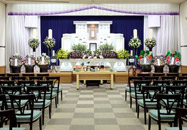Pictures of Bolivia's skull festival called Día de las Ñatitas - National Geographic
Dec 17, 2018Shovels cut through the sour soil until the unmistakable clink of metal against bone, then lift the muddy faces to formation on a stone ledge. The crowd gathered in the rain offers coca leaves, neon soda, and sprinkles of alcohol to each cranium before sticking lit cigarettes into their decaying mouths and topping with flower crowns. As the high-altitude sun emerges, the priest arrives to don vestments and give a blessing over candles sticking out of the ground.The following morning, thousands of devotees carry their own skulls in cabinets from the shrines in their homes to the cemetery for Día de las Ñatitas, or Day of the Ñatitas–a sweet diminutive for these revered skulls, literally meaning "pug-nosed ones"–then pray, sing, and dance through the city streets. Observed by the country's second largest indigenous group, the Aymara, the massive annual festival on November 8 combines Catholicism with precolonial Inca beliefs to give gratitude to the spirits occupying the ñatitas, whether buried or displayed throughout the year.“No matter where you are, you think about [the ñatitas] and ask for whatever you want and need: to be good at your studies, for health, and protection,” explains participant Lais Mejia A. Keeping a ñatita in one’s home is considered by many people to provide a great advantage, since the dead are thought to have power to influence all aspects of life, like love, money, business, and safety.Perhaps no one keeps more of this security in their house than Elizabeth “Eli” Portugal Coronez de Aduviri, nicknamed the “Queen” of the nearby cemetery. Seventy-three ñatitas–wearing knit hats with their names embroidered on them–occupy a place of honor in a special room. Rays of alpine sun peek through spaces in the corrugated roof. Stacked in rows on metal shelves, the skulls stare back at the utilitarian wooden benches surrounding local media accolades,...



